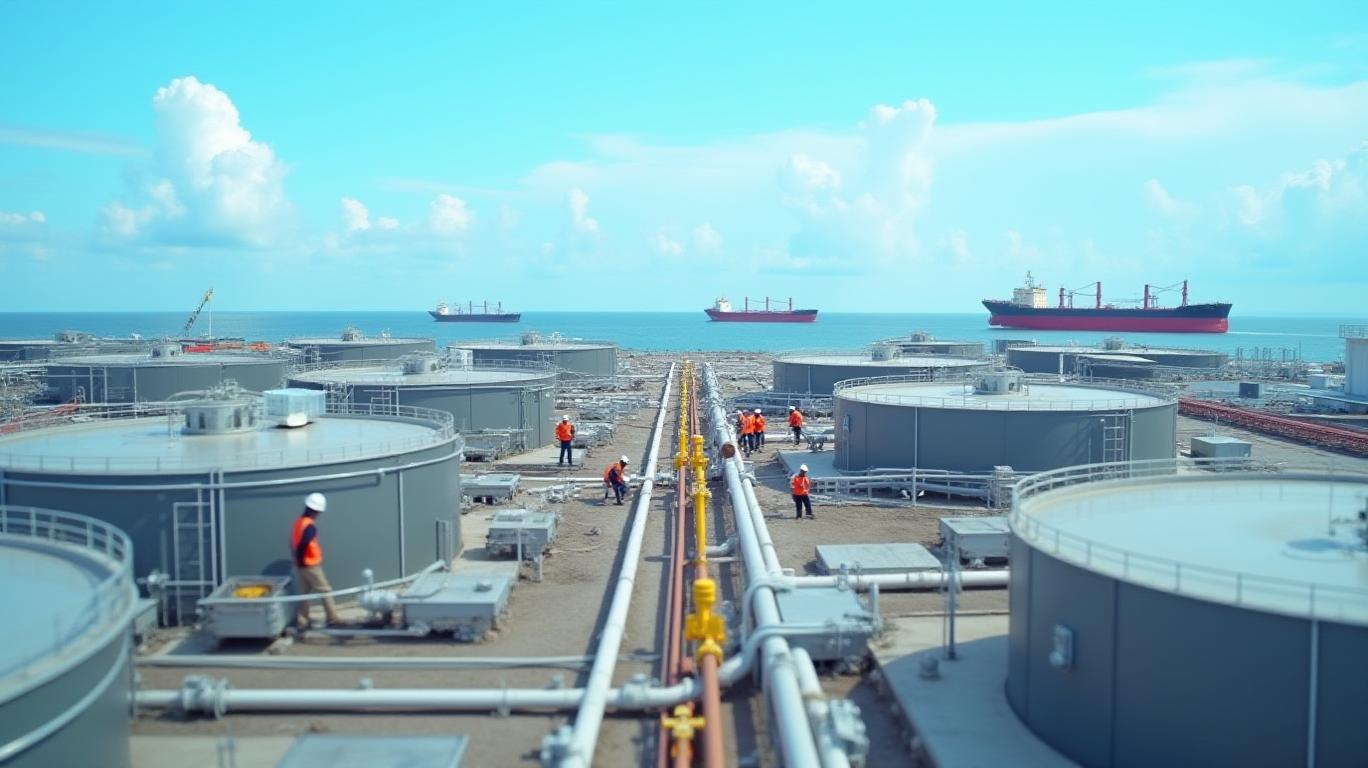Eli Lilly's Mixed Q3 Results: EPS Surge Masks Underlying Challenges Ahead
Eli Lilly (LLY) delivered a paradoxical Q3 2024 performance: its Non-GAAP earnings per share (EPS) soared by 1,080% year-over-year, while revenue grew 20%, yet shares slipped in after-hours trading amid concerns over strategic investments and a lowered EPS outlook. The pharma giant’s results underscore both the explosive growth of its diabetes/obesity franchise and the trade-offs of scaling global operations.
Ask Aime: "Leverage Eli Lilly's (LLY) Q3 2024 earnings surge into smart investments."
The EPS Mirage: Adjustments vs. Reality
Lilly’s Q3 Non-GAAP EPS of $1.18 marked a staggering 1,080% increase from Q3 2023’s $0.10. This surge was driven not by pure profitability but by adjustments: excluding $3.09 billion in IPR&D charges (related to acquired R&D projects) and tax impacts. Meanwhile, reported EPS fell to $0.28, down from $2.09 a year earlier, due to these one-time costs.
Ask Aime: "Eli Lilly's Q3 Earnings Surged, but What's Behind the Drop?"

The 20% revenue rise to $11.44 billion was more sustainable, fueled by Mounjaro (up 119% to $3.11B) and Zepbound ($1.26B), its new tirzepatide formulation. Excluding a $1.42B one-time gain from the 2023 sale of olanzapine rights, organic revenue grew 42%, highlighting the strength of its pipeline.
The Revenue Engine: Winners and Losers
- Mounjaro/Zepbound: Combined U.S. sales hit $3.64B, but international sales lagged (-12% excluding olanzapine), signaling pricing pressures or slower market access.
- Trulicity: A 22% revenue drop to $2.38B underscored the threat of competition from rivals like Novo Nordisk’s Ozempic.
- Non-incretin drugs: Oncology and immunology portfolios grew 17%, proving diversification beyond diabetes.
Costs and Investments: Fueling Future Growth?
Lilly is plowing cash into R&D and manufacturing:
- R&D spending rose 13% to $2.73B, backing late-stage programs like donanemab (Alzheimer’s) and lebrikizumab (atopic dermatitis).
- $6.3B in capital projects, including a $4.5B U.S. manufacturing hub and a $1.8B Irish facility, aim to boost capacity for Mounjaro and biosimilars.
Q4 Outlook: Raised Revenue, Lowered EPS
Lilly raised full-year 2024 revenue guidance to $45.4–46.0B, reflecting confidence in supply chain improvements. However, EPS guidance was slashed:
- Reported EPS: Lowered to $12.05–$12.55 (vs. prior $15.10–$15.60), hit by IPR&D charges.
- Non-GAAP EPS: Trimmed to $13.02–$13.52 (vs. $16.10–$16.60), excluding one-time items.
This cautious stance spooked investors, with shares dropping ~3% after-hours—a reaction reminiscent of peers like Outbrain, which saw a 5.8% decline after missing Q4 2023 estimates.
The Bottom Line: Growth at a Cost
Lilly’s Q3 results are a tale of two halves:
- Strengths: Dominance in diabetes/obesity, with Mounjaro/Zepbound driving $3.64B in U.S. sales, and non-incretin portfolios showing resilience.
- Weaknesses: Trulicity’s decline, rising R&D costs, and international revenue headwinds.
Investors must weigh whether the 42% organic revenue growth and pipeline wins justify the lowered EPS outlook. With donanemab and lebrikizumab on track for approvals, Lilly’s long-term prospects hinge on executing its manufacturing bets and fending off competition.
Conclusion: A Risky Reward Proposition
Lilly’s Q3 results highlight its position as a winner in the diabetes race, but its shares’ after-hours dip signals skepticism about its ability to balance growth and profitability. The $45.4B revenue target is achievable, but investors will demand clearer visibility on Trulicity’s decline and the ROI of its $6.3B investments.
For now, the stock’s 10.2x 2024 P/E ratio (vs. 12x for peers) reflects this uncertainty. Buyers should focus on the long game: if Mounjaro’s dominance and new pipeline approvals materialize, Lilly’s shares could rebound. But near-term volatility is inevitable as the company navigates its costly scaling phase.
In summary, Lilly’s Q3 was a victory lap for its star products but a reminder that growth comes at a price. Investors must decide whether the 42% organic revenue surge outweighs the risks of rising costs and slowing international adoption.

_b905d9341749265671656.jpg)








